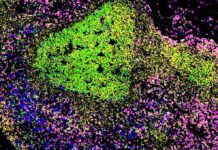An Enigma Unveiled: Decoding the Disparity in Neuron Growth
In a groundbreaking study recently published in Science, the growth rate of neurons has been unraveled as intimately linked to the respiration rate in mitochondria. Astonishingly, manipulating mitochondrial respiration in mouse neurons has demonstrated the ability to align their growth patterns with that of human neurons, and vice versa. This remarkable revelation not only sheds light on the enigmatic realm of brain development but also holds potential for expanding treatment options for developmental disorders.
Unraveling the Intricate Puzzle: Seeking the Underlying Cause
For years, scientists have pondered the perplexing phenomenon of human neurons exhibiting significantly slower growth compared to their mouse counterparts. Pierre Vanderhaeghen, a distinguished developmental biologist and senior author of this study, embarked on a quest to unearth the underlying cause of this perplexing discrepancy. Previous experiments, involving the transplantation of human cortical neurons into mouse brains, yielded unexpected outcomes—the transplanted human neurons still displayed sluggish growth. This led Vanderhaeghen to speculate that intrinsic properties of neurons, rather than external brain signals, played a pivotal role in this subdued growth.
Moreover, Vanderhaeghen and his team astutely observed that all facets of the neuron, encompassing dendrites, synapses, and axons, grew in unison, implying the involvement of a ubiquitous cellular component governing this growth. Prior research had hinted at the potential involvement of mitochondria in cellular development, propelling Vanderhaeghen and his team to explore whether mitochondria were indeed instrumental in regulating neuron growth.
Deciphering Neuron Age: Assessing Mitochondrial Functionality
To dissect the impact of mitochondria on neuron growth rates, the researchers sought a precise method to determine the age of individual neurons. However, neurons do not progress at uniform rates, even when originating from the same stem cells. To surmount this hurdle, Vanderhaeghen and his team devised a genetic tool leveraging an engineered enzyme called CreER, capable of discerning the activation of the promoter NeuroD1—a telltale sign of a neuron’s “birth.”
Armed with this ingenious tool, the researchers meticulously tracked neuron age, enabling a comprehensive examination of mitochondrial morphology, genetics, and respiration rates. To their astonishment, after two weeks of birth, mouse neurons were found to consume nearly ten times as much oxygen as their human counterparts.
Unleashing the Power of Mitochondrial Respiration
This groundbreaking discovery propelled the researchers into uncharted territory. They realized that mitochondrial respiration could be manipulated pharmacologically. By accelerating metabolism in human cortical neurons in vitro, they observed accelerated maturity compared to normal human neurons. Encouraged by these results, the team replicated the principle in vivo by implanting human neurons, exhibiting heightened metabolic rates, into mice while simultaneously dampening the mitochondrial metabolism of mouse neurons.
The findings from these experiments unequivocally confirmed their initial observations: human neurons with heightened metabolic rates exhibited accelerated growth, while mouse neurons with diminished mitochondrial metabolic rates displayed reduced growth.
Far-Reaching Implications and Future Frontiers
The protracted growth of the human brain is widely believed to contribute to our distinctive cognitive capacities. Understanding how mitochondrial metabolism orchestrates this growth has the potential to unveil the intricate factors that define our humanity. Furthermore, targeting mitochondrial metabolism could emerge as a viable strategy in treating developmental disorders stemming from aberrant brain development rates.
Nevertheless, Vanderhaeghen is keen to emphasize that this study merely scratches the surface. Mitochondria likely represent just one facet among a myriad of mechanisms that influence developmental timing. The research serves as a catalyst for exploring a multitude of fundamental questions. For instance, the direct impact of manipulating energy transfer on brain size and neuron generation remains an intriguing avenue for future investigation. The excitement surrounding further exploration in this field of study is palpable.
Unveiling the Excitement of Future Research
Renowned biologist and neuroscientist Suzana Herculano-Houzel, uninvolved in the study, expressed her enthusiasm for the research and its potential implications. She lauds the study’s ability to exemplify the essence of scientific inquiry—answering one question while raising ten previously unknown ones. Herculano-Houzel poses captivating inquiries about the consequences of manipulating energy transfer in the developing brain. Will it directly impact brain size? Will it influence neuron generation? These profound questions, now made possible by the study’s findings, invite further exploration and scientific curiosity.
Building upon the Foundation of Mitochondrial Metabolism Discovery
While mitochondrial metabolism took center stage in this study, Pierre Vanderhaeghen acknowledges that mitochondria alone do not hold the key to unraveling the intricate complexities of developmental timing. He recognizes that multiple undiscovered mechanisms are waiting to be unveiled. Mitochondria represent merely a single piece of the intricate puzzle.
Nonetheless, the implications of this research are momentous. Unraveling how mitochondrial metabolism influences neuron growth rates paves the way for investigating the contributing factors to human brain development and cognitive abilities. Moreover, this newfound knowledge could pave the path for innovative treatment approaches targeting developmental disorders rooted in abnormal brain development rates.
As scientists delve deeper into the intricate mechanisms governing neuron growth and brain development, the potential for groundbreaking discoveries and transformative therapies continues to expand. The journey towards unraveling the mysteries of the human brain and its unique features has only just begun, and this study serves as a promising catalyst, propelling us towards the frontiers of this captivating field of study.
Google News | Telegram
















